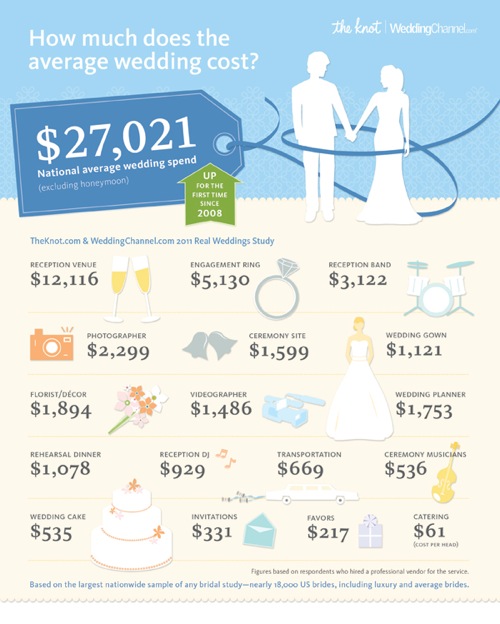Articles and News
BRIDAL BOOTCAMP: FIVE MYTHS HOLDING YOUR BRIDAL BUSINESS BACK | March 21, 2012 (0 comments)

This is the first of a series of exclusive articles for The Centurion Newsletter, designed to help jewelers understand the Millennial-age bridal consumer and maximize their opportunities both for bridal jewelry business and building a long-term relationship with these customers.
New York, NY—Beyond the $11 billion in annual sales it generates, the bridal jewelry market is an opportunity to be part of a consumer’s first fine jewelry purchase and to create loyal relationships that will bring you business for years to come.
Who are today’s brides and grooms? Where are they shopping? How can you extend your relationship beyond the engagement ring purchase? With data from The Knot’s 2011 Engagement and Jewelry Study, we’ll be answering these questions and more in our Bridal Bootcamp series over the next few weeks. But first things first: let’s get rid of some common myths about how to sell to today’s couples.
Myth #1: The engagement ring is a gift from the man to the woman, and she is not involved in choosing her ring.
Wrong! Two thirds of the 10,000 brides we surveyed told us they were involved in their engagement ring purchase. Of the brides who were involved with the purchase, approximately half purchased or shopped together for the ring, the other half openly discussed with her fiancé what she wanted in advance.
Myth #2: If she’s reading a bridal publication, she’s already got a ring.
Actually, 40% of brides told us they came to TheKnot.com for the first time before they were engaged, and it’s not just for gathering ideas: according to our 2011 Real Weddings Study, 16% of brides begin actively planning their weddings before he pops the question! Once he does, the average length of engagement is 14 months, during which the bride is typically on a spending spree for the wedding and the new home.
Myth #3: Stone size and quality is most important to her.
Guess again! She cares most about stone shape and the style of the setting. Just over half of brides received round center stones, with 30% opting for a princess cut. The remaining 20% is divided between more unusual cuts including as marquise, cushion, and emerald. Three-fourths of brides’ engagement rings are set in white gold.
Myth #4: Online doesn’t play much part in ring shopping.
Only one in 10 grooms will actually buy at least part of the engagement ring online, but the Internet was the number-one resource brides used to research rings. Our research found that even those brides who weren’t involved in the ring purchase still researched rings online. Retailer sites and search engines are the most popular online sources, followed by designer sites, TheKnot.com, diamond industry sites, and online-only sites like BlueNile.com.
Myth #5: Bridal is a niche market.
Consider how much you already know about your bridal customers. Naturally, they now have an anniversary to celebrate every year, and they typically have their first child within three years. These major life events, plus regular holidays, create fine jewelry gifting opportunities over and over. The engagement ring sale is your entrée into the lives of these customers, and with the average number of both bridesmaids and groomsmen being between four and five according to the Real Weddings Study, that’s a lot of additional potential for gifts and wedding day jewelry sales.

Separately, The Knot/The Wedding Channel's just-released 2011 Real Weddings Study reveals these additional data:
- Wedding budgets are on the rise for the first time since 2008, with the average wedding budget in the United States coming in just above $27,000 (excluding honeymoon).
- Couples are getting older: the average bride is now 29 years old at first marriage; the average groom, 30.
- The cost of the engagement ring is one area where couples are spending less than they did a few years ago: $5,130 down from $5,392 reported in 2010, and certainly lower than the typical $7,000 reported by prestige jewelers in 2011. But The Knot's findings still come in above than the overall industry average, which experts estimated last year to be about $3,500.
- High-end weddings are far more traditional and last longer. The luxury wedding segment (those spending an average of $100,000 on their wedding) had approximately 85,000 weddings in 2011 and represents a $9 billion industry. Luxury weddings are more formal/black-tie (46% vs. 15% of the non-luxury market) and larger (204 guests compared with 141 guests attending non-luxury weddings). Luxury weddings are also longer affairs, with 74% of couples hosting three or more days of events. The look is also more traditional: Ivory/champagne and metallics are the most popular wedding color palettes among luxury brides, compared with purple, blue, and green among all brides. Brown, the “it” color of 2008, is out.
- Every wedding has a website. Couples increasingly communicate with guests online. The vast majority of couples now have personal wedding websites (69% of couples created one in 2011 vs. 65% in 2010 and 60% in 2009), and brides are increasingly using social media to share wedding details with guests (45% of couples did so in 2011 vs. 32% in 2009). Nearly one in six brides (15%) even kept in contact with their vendors via Facebook and/or Twitter.
- The costliest place to have a wedding? Manhattan, NY, with a $65,824 average spend for the day.
- Pinching pennies? Get married in West Virginia, where an average wedding costs $14,203.
- September has overtaken the traditional June as the most popular month for weddings, and almost one-fourth of couples (24%) now favor a destination wedding.
Next week: Find out who today’s brides and grooms are, and how they shop for engagement rings! In the meantime you can follow us on Twitter @TheKnotB2B or email questions to The Knot’s jewelry specialist, Nikki Spangler, at nspangler@theknot.com for more information about reaching brides on TheKnot.com.







